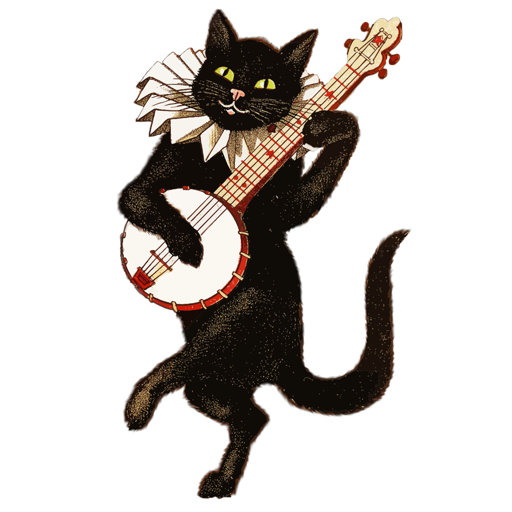

- © 2003 - 2024 Dynamix Productions, Inc. Contact Us 0



"I got rhythm, I got music, I got my man
who could ask for anything more?"
George and Ira Gershwin
Do animals have rhythm? I found myself wondering that as I watched my cat's tail thump. Because of some slight annoyance only a cat would have, Onslow thumped his tail rhythmically several times, then slowly stopped after about a minute. In fact, he did what we call in music, a retard. That is, his tempo slowed down in a methodical manner, each successive tap mathematically slower than the previous. I actually tapped my finger nearly in time with his tail as it came to a stop. So was he singing Brahms' Lullaby in his head, or was he just becoming less annoyed?
Researchers have been wondering for a long time if animals understand music. Specifically – can animals follow a beat? Charles Darwin, while writing about the evolution of music, postulated that music tapped deep into the roots of evolution and was spread across the animal kingdom. After all, frogs chirp in a rhythm, fireflies blink to a quasi-beat, and elephants can dance. But these delightful displays of disco-like rhythm can't really answer that question without more study.
Enter Snowball. Snowball is a cockatoo that was brought to a bird rescue organization in 2007 that loves to dance to music. In fact, Snowball can dance to different tempos, rhythms, and songs. What started as a novelty turned into full-blown scientific studies and a new field of study. Scientists began observing how a variety of animals that are exposed to music behaved, and found that those that could vocally reproduce sounds they've never heard before (vocal learning) are more likely to be able to "entrain," that is respond to an external beat. These include parrots, elephants, and us.
The working hypothesis was that only vocal learners could entrain. But a rescued sea lion named Ronan clouded the picture. Researchers at UC-Santa Cruz used a thin evolutionary connection between walruses and seals (which can imitate speech) and their distant cousin, the sea lion (which can grunt or bark on command and at different speeds) to push the limits on the vocal learning theory. Ronan first learned to bob her head to simple metronome beats, but graduated to real music. EWF's "Boogie Wonderland" was a favorite, as well as Snowball's fave "Everybody" by the Backstreet Boys.
Primates, previously thought to have no response to music, began to show they could groove as well. Though great apes are nonvocal learners, wild chimpanzees and bonobos have been observed drumming their hands and feet on their bodies. Recent controlled studies had bonobos drumming in sync with humans, but the jury is still out on whether that's a result of them becoming too humanized while in captivity.
So now the working theories started to get out of step and lose their groove. Do animals need vocal learning neural circuits in order to have rhythm? We know the body can move with a beat, but what about the brain? Scientists began looking back at neural studies about rhythm to see. In 2005, researchers found that certain neural circuits will oscillate in time with external rhythmic tones. Subsequent studies have found the same thing occurring in other animals, like monkeys and zebrafish. To take it further, and deeper into the brain, researchers found that neural circuits used for motion control also process auditory rhythms. And they seem to store patterns for us to reproduce later. Even when one is at rest, the motor circuits are active and anticipating when the next beat will be.
So why would the brain want to connect hearing and movement? Maybe it goes way back in evolution to being chased: the anticipation of the next footfall behind you or the swing of the predator's claw toward you could save your life. Rhythm is all through nature, from birds flying in formation to the highly coordinated hunts of wolves. But cockatoos, elephants, and humans that can vocalize may have a more highly developed response to music. It's been theorized that creating and responding to rhythm is mostly a social behavior. Human, parrots, and elephants are social species that use vocalization to communicate. And vocalizations are rhythmic in nature. Our ancestors, it's thought, sang and danced as social ritual before refining language. The next question in this research is, how do we motivate other animals enough to reveal their true musical abilities? Can a fish perform synchronized swimming? Can a horse clomp to the theme song from Mister Ed? Can my cat learn to dance? Well, probably. But he doesn't want to, because he's... you know...a cat.